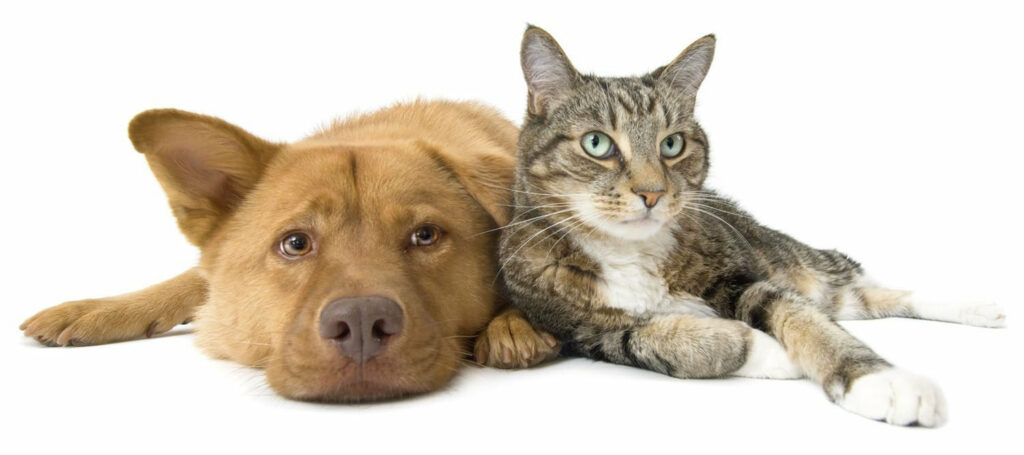Making the decision to euthanize a beloved pet is the hardest thing an owner ever has to do. Pet parents struggle with this daily. The loss of our pet is inevitable. We know that in our heads, but not in our hearts.
I adopted my brown tabby cat, Monty, from the Luzerne County SPCA. I was actually there looking for a cat for a co-worker when they brought in this tiny, 5-week old kitten. He had been found on a heavily traveled main road in Wilkes-Barre. I saw this tiny mite peering at me out of this cage, and I immediately thought that he was such a baby, much too young to be in the shelter environment. And Monty came home with me.
Today my topic is being written with the author in mind. Recently Monty, now a senior at 13 years old, stopped eating. He was previously diagnosed with hyperthyroidism, which has been controlled with daily medication for some time. Monty’s disease made him ravenous, so he would devour his pill pocket without hesitation. Until one morning I put his food down, and he was disinterested, I was astonished but not too concerned. We all don’t feel well from time to time, so I did not give too much thought to his loss of appetite. But when Monty refused his next meal my concern was extremely heightened. Loss of appetite is not a common symptom in a hyperthyroid cat.
Monty’s health began to rapidly deteriorate. He went to the vet three times in one week – for sub q fluids, x-rays, and blood work. The blood work indicated his elevated thyroid level, but everything else was in normal range. The x-ray revealed a mass in the front of Monty’s heart. An ultrasound would most likely reveal a diagnosis for Monty’s failing health, but it would not change the prognosis. Monty was thin due to his disease, and when illness struck his weight began to rapidly decline at an alarming rate. I felt helpless, and desperate. Monty was too frail to survive surgery.
I consulted with my vet daily, and followed all the instructions and recommendations I was given. I began to feed Monty with a syringe to get nutrition into him. We wanted to see if this would stimulate Monty’s appetite once again. And of course he desperately needed nutrition.
At Monty’s vet appointment this past Friday he received more sub q fluids for dehydration, and the vet also gave him a steroid shot. He wanted to see if this would help Monty feel better and to stimulate his appetite, which it did. An hour after I brought Monty home he was meowing (for food?). And once again he was eating on his own. Not the normal portion, but was drinking water and eating the small portions I offered throughout the day.
But I realize this is a temporary solution to a terminal diagnosis. As long as Monty is fighting, I am there for him. When it becomes too hard, I will have to let him go. I will not let him suffer.
The most common question from owners as they are reaching the end of their pet’s life is, “How will I know when it’s time?” The answer is “There is no ‘right’ time.”
Quality of life is a roller coaster. You may make an appointment for euthanasia, only to have your cat rally and have a good morning. In response, you cancel the appointment and your cat’s condition declines overnight making you wish you hadn’t second guessed yourself.
Waiting until the suffering is nearly constant would make the decision to euthanize “easier,” but this is certainly not best for the animal in question. All we can do is monitor quality of life, and when we see signs of significant decline with no reasonable expectation for meaningful improvement, euthanasia is warranted from that point on.
To help with this, it is recommended to write down a few concrete milestones. These are red flags. As quality of life deteriorates, we can get used to a new normal, and it can be hard to remember what a pet’s life used to be like. Monitor five categories: eating, drinking, peeing, pooping, and joy in life.
Without adequate nutrition, hydration, and elimination, suffering inevitably follows. Medications and/or medical procedures are available that can assist pets with their bodily functions and provide pain relief, but eventually they become inadequate to the job at hand.
Evaluating “joy in life” is more difficult. This is where the red flags are most useful. Has your dog or cat always greeted you when you arrive home? If she no longer has the energy to walk to the front door, it is time to assess her situation. Has your cat always wanted to sit on your lap but is now seeking solitude behind the couch? While behavioral changes like these are more subtle than, for instance, an unwillingness to eat, they are just as important.
People fear that they might step in too early. Better a week too early than an hour too late. Ideally you want to spare pets and their owners this level of suffering. At the end people often wish they had stepped in sooner. It is a difficult, and heartbreaking time.
If your pet is suffering and you cannot euthanize, you must provide hospice care. I often hear people claiming that they want their pet to die “naturally,” but there is nothing natural about an animal enduring days, weeks, or even months of misery before death mercifully arrives. We bring this about by providing shelter from predators and the environment, and with nutritional support and medical care. We do this all out of love.
But with the ability to prolong life comes the responsibility of saying “enough is enough” when we are no longer doing right by our beloved companions by keeping them alive.
For this reason, I will continue to constantly monitor Monty’s condition. Tonight he is bright, meeting me at the door, meowing for food. Tomorrow morning might be different. I am taking this painful journey minute by minute, through constant communication with my vet.
Right before Monty became ill, I adopted a kitten through Rescue Warriors. Miss Monet is a beautiful and delightful kitten who immediately fit right into the crazy Endo household. Of course I am currently keeping her separated from Monty. A sick kitty does not need the antics of a mischievous and active kitten. I did not anticipate how things would unfold, but such life changes cannot be predicted. I am controlling the situation, and it is acceptable to both. Smudge, my senior Cairn Terrier, has been the most wonderful babysitter for kitten Monet since I am spending much time caring for Monty. Smudge will allow little sister Monet to ambush him when he is walking through the house, he will share his favorite window perch with her, and he even allows her to play with his most treasured possession, his rubber ball (binky). Smudge will not allow either of his canine brothers to touch his toy binky! Bless Smudge for the gentleness and patience he demonstrates with baby Monet.
On this note, in 2020, make a resolution to be kind, to animals and fellow humans.
To my dear friend Carol. I am so sorry about the loss of your beloved senior poodle, Ginger. You are in my thoughts and prayers.
Dog bless.
Resource: Dr. Jennifer Coates/PetMD

Judy Endo is the author of Paws-itive Pet Tales. A lifelong resident of the Wilkes-Barre area, she has been a professional dog trainer/competitor as well as a lifetime animal lover and strong supporter of animal rescue. Contact: judyendo@outlook.com




